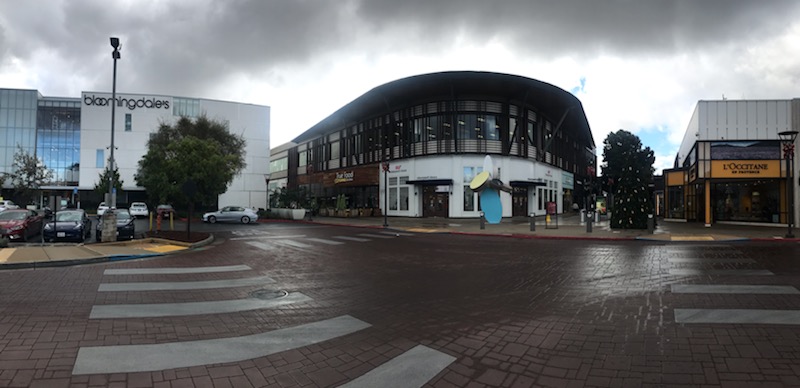Major metropolitan areas in the US have been hit with flash mobs of thieves. The crimes are spurring calls to return to draconian punishments and boost local law enforcement budgets. But technology already in place in these businesses could seriously blunt these crimes, if not end them altogether. The question is whether the shoppers and retailers are ready to take responsibility for using it.
Common technology is at the heart of these crimes. The organizers use readily available social media tools to recruit and gather teams, collect and fence the stolen goods. To date, law enforcement is just now starting to realize this. They are employing digital forensics to identify and track members and leadership of these gangs. Largely, however, they have either been unable or unwilling to stop the thefts. They erroneously blame changes in state laws for encouraging the activity. After a high-end consignment shop in Palo Alto, California was hit, the city police chief cited this legislation as to why his hands were tied. However, in California, the upper limit of petty theft is $950 and every flash mob crime to date has exceeded that barrier. Moreover, the potential charges for these crimes are more than simple shoplifiting. More on that later.
How it’s done
Using encrypted text messaging apps, the organizers recruit young people between the ages of 15 and 25. According to Norton Security, Telegram is especially popular with criminals for communication and selling stolen goods. More than 60 per cent of Telegram users are in the sweet spot of 15-25 years old. After recruiting the team, which could be as large as 50 people, they set appointments for meeting up where they are given whatever tools they will need to grab merchandise, the location target, and where they will reconvene to deliver the goods and collect their bounties, ranging from $500-$1000 each.
The organizers then post the stolen goods on platforms like Facebook Marketplace and eBay where their identities are protected by the platforms. That doesn’t mean the platforms approve of the practice. In fact, their terms of use prohibit such activity. They do not, however, enforce those rules.
Cyber Protection Magazine contacted several technology firms about the use of their products to blunt the scourge and confirmed that they could be used effectively. They just don’t believe society would accept the limitations that would come with their use. Moreover, social media companies, like Meta, have yet to show any concern over the use of their platforms to sell stolen goods.
Tech to the rescue? Maybe not
The retail community could help police using widely available technology, including RFID chips implanted in the merchandise, according to Wouter Ubbels, vice president of sales at Nedap Retail, a provider of the technology. Currently, as the products are checked out, the RFID chips alert the inventory management system that a purchase has been made. Ubbels said that makes it possible for the stores to reject refunds to customers who purchased stolen goods from someplace like eBay. Ubbels said this is a common occurrence in Europe.
Taking it a step further, Ubbels suggested that these mobs rarely just hit one store but target multiple stores. For example, in San Jose, California, a Lululemon store in a high-end mall was robbed of $40,000 worth of clothing in mid-November. At the same time, another contingent of the mob was stealing $7,000 worth of sunglasses at a mall across the street. The second group was stopped when a security guard noticed several cars with license plates covered near the entrances and alerted police.

Ubbels suggested that RFID sensors at the door of the first store could have noted a large number of products leaving the store that had not been cleared by the cashier. That could have triggered an alarm with the police that a robbery was taking place and dispatched units appropriately. As it was two of the thieves were apprehended thanks to the alertness of the security guard in the other mall.
We suggested a more extreme scenario. Since the late 1980s most large retail real estate use computerized systems that control lighting, HVAC, refrigeration and even security, including alarms, door locks and video surveillance. The systems’ programming can override theft protection in the event of a fire or other emergency that requires evacuation. If anyone walked out with merchandise without going through checkout, the RFID would trigger an electronic lock on the door. A few thieves might run out before the trigger, but a significant number could, in the least, be slowed down until police arrive.
Reluctance
Ubbels agreed that the existing technology makes this possible but had concerns.
“The idea in principle is not bad,” Ubbels said. “However, everything in retail is geared towards providing a positive experience for the people that are willing to pay. If you would do this, that is not going to be a good experience for the customers. Because nobody wants to be perceived as a thief when the doors are closed, or it doesn’t work. There’s probably a liability and a safety problem.”
Ubbels concern can be lessened, once again by technology. These building control systems can be programmed to override the theft protection in the event of a fire or other emergency that requires evacuation of the store. His first concern is the greater problem.
People are resistant to change, even when the change is beneficial to them and society. Even as small an act as using two-step verification is seen as a violation of a person’s freedom. It is likely that there would be significant pushback from customers as Ubbels predicted.
However, people are also likely to adapt if solutions to social problems actually work. No one likes the security precautions at airports, but there have been hardly any hijacking attempts since implementation. Travellers still grumble but they have adapted and whole industries have arisen to help them navigate the barriers. Some retail establishments lock up high-end clothing, medication and liquor. Customers have adapted appropriately to those measures. RFID technology would have little effect against true petty theft, but it could hamper gangs rampaging through stores and malls.
Enforcement reluctance
Technology is useless without enforcement and local US law enforcement, on the whole, claims there is almost nothing they can do to slow the thieves down. They blame budget restrictions, the speed of the thieves and, primarily, the legal limits to what they can do. The San Francisco district attorney’s office is roundly criticized for not pursuing petty theft cases as the crimes have grown. All of these excuses are debatable.
No major police department has seen staffing or budget cuts across the US. Most cities have dozens of openings for officers, but they seem to be hesitant to apply technology to the problem. The FBI found they can linger in the dark web and impersonate criminals to recover cryptocurrency ransoms collected by cybercriminals. As yet, police are not monitoring known criminal discussions on encrypted platforms to get a jump on flash mob crimes. That, however, is changing.
Steven Wagstaffe, district attorney for San Mateo County, said he and DAs from seven other Bay Area counties are coordinating on this issue and are ready to escalate.
Bringing the hammer down
“We are all in agreement that felony conspiracy is one of the additional charges to be considered,” he revealed. “All it takes is for two people to say, ‘Hey, let’s go rob that store,’ to establish a conspiracy. We’ve also talked with acting US Attorney Stephanie Hinds who is offering to bring federal organized crime charges to bear. The threat of these charges is commonly brought to bear on low-level criminals to coerce them to identify organization leaders.”
Wagstaffe credited the arrest of two of the people involved in a mob attack in November to increased cooperation between counties. After hitting a mall in Walnut Creek, California, the two decided on their own to do the same in Stanford Shopping Centre but they were identified and arrested travelling through San Mateo County. He said The DAs are instructing law enforcement to confiscate electronic equipment from those that are arrested. The devices are being forensically investigated to identify organizers.
Wagstaffe took a categorically opposite position from Ubbels on the use of RFID technology. “I personally like the idea of using RFID and building controls to slow down the gangs. In fact, we will be meeting with retailers and bringing up the idea with them before Christmas.”
Ubbels reluctance may be mirrored on the corporate level as we tried to get comments from major retail management on the idea. However, several smaller businesses located in malls said, anonymously, they would welcome using RFID technology to slow down the gangs.
There seems to be a growing acceptance among government and businesses for using this technology to stop these thefts. Will the general public will accept it? Stay tuned.
Lou Covey is the Chief Editor for Cyber Protection Magazine. In 50 years as a journalist he covered American politics, education, religious history, women’s fashion, music, marketing technology, renewable energy, semiconductors, avionics. He is currently focused on cybersecurity and artificial intelligence. He published a book on renewable energy policy in 2020 and is writing a second one on technology aptitude. He hosts the Crucial Tech podcast.



